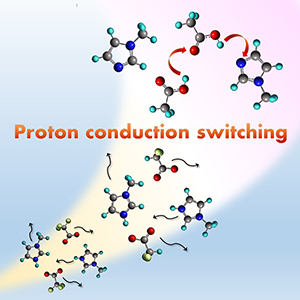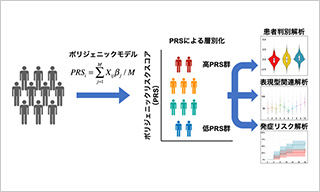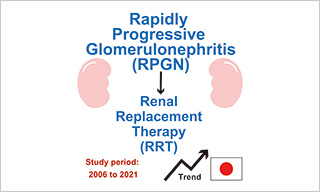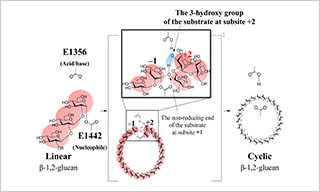Jan 26 2021
The research team led by Prof. Yasuhiro Umebayashi of the Graduate School of Science and Technology, Niigata University, along with their collaborators from Tokyo University of Science, Japan, Yamagata University, Japan and University of Regensburg, Germany have published a scientific article which enhances clarity on the understanding of proton conduction mechanism in protic ionic liquids. The findings which were recently published in The Journal of Physical Chemistry B sheds light on the transport of hydrogen ions in these liquids, which opens new avenues for the development of novel energy generation and storage devices.
With an objective to understand the underlying ion transport mechanism in protic and pseudo-protic ionic liquids, the multinational research team has been on constant pursuit for over a decade to uncover the mystery. "We are fascinated by the immense potential exhibited by proton conducting ionic liquids. These superionic liquids are usually materials in the liquid state which show high protonic conductivity. Owing to their superior electrical properties, we believe that they are excellent candidates as electrolyte in fuel cells. So we have been constantly attempting to understand them better to effectively extract their potential as fuel cell electrolytes" says Prof. Umebayashi.
Such a study is essential in today's context as research groups across the globe strive to develop new technologies to meet the world's growing need for energy with a simultaneous caution to conserve the environmental resources. Among the prominent clean energy technologies, fuel cells have emerged as a suitable candidate for a wide variety of static and dynamic engineering applications.
Asst. Prof. Hikari Watanabe of the Faculty of Science and Technology, Tokyo University of Science explains that "In the recent past, fuel cells are one of the most promising and high potential green energy sources. The investigation on improving the efficiency of fuel cells has been persistent for over a century and it’s about time for a breakthrough".
A fuel cell converts the energy from a chemical reaction into electrical energy in an environment friendly process. The benefits of using fuel cells over conventional combustion-based technologies are numerous - higher efficiencies, lower emissions and quiet operation to name a few. The fuel cell functionally comprises, mainly of three regions such as the cathode, anode and electrolyte. While the cathode and anode are good conductors of electrons, the electrolyte is a chemical medium with poor electrical conduction. Predominantly, the electrolytes conduct oxide ions or protons. Owing to the agile nature of the protons, fuel cells constituted by protonic conductors hold immense potential in future renewable energy resources.
Protonic conductors, the materials which reveal the transportation of hydrogen ion, are usually considered to exhibit proton hopping mechanism. "The Grotthuss mechanism, alternatively referred to as proton hopping or proton jumping shall be visualized by an analogy wherein a group of children, arranged in a particular fashion, pass a ball consecutively from one person to the other. In scientific terms, proton hopping denotes the process of diffusion of an excess proton through a network of hydrogen bond" describes Asst. Prof. Watanabe. Alternatively, proton transport occurs by the vehicle mechanism, wherein the free proton gets attached onto an oxygen ion and moves together with it. This mechanism is analogical to the movement of a ball carrier in a rugby game.
The researcher team by both theoretical simulations and experimental studies have identified a relation between the proton conduction behavior and the pH of the ionic liquid. They interestingly note that the proton conduction mechanism shifts from proton hopping to vehicle mechanism when the acidity of the liquid electrolyte increases. The valuable findings offers the potential to identify new families of protic ionic liquids by controlling the acid levels.

Schematic representing the switching between proton conduction mechanisms
"The development of new hydrogen ion conductors will lead to the practical application of fuel cells. We have found that the mechanism of hydrogen ion conduction is related to the index of acid and alkali. The idea of acids and alkalis is widely known and can be applied to various substances. We hope that new hydrogen ion conductors will be identified using this index as a guideline", reveals Prof. Umebayashi.
The interesting results of the research study will support the large-scale utilization of fuel cells in the near future.
Journal: Journal of Physical Chemistry B
Title: Effect of Brønsted Acidity on Ion Conduction in Fluorinated Acetic Acid and N-methylimidazole Equimolar Mixtures as pseudo-Protic Ionic Liquids
Authors: Hikari Watanabe1, Nana Arai2, Yasuo Kameda3, Richard Buchner4, Yasuhiro Umebayashi2 (Tokyo University of Science1, Niigata University2, Yamagata University3, Universität Regensburg4)
DOI: 10.1021/acs.jpcb.0c07706
The article was released in EurekAlert, the online publication of the American Association for the Advancement of Science.

Polygenic effects on the risk of Alzheimer's disease in the Japanese population

Trends in the incidence of renal replacement therapy due to rapidly progressive glomerulonephritis in Japan, 2006–2021

Uncovering The Cyclization Mechanism of Cyclic β-1,2-Glucan Synthase